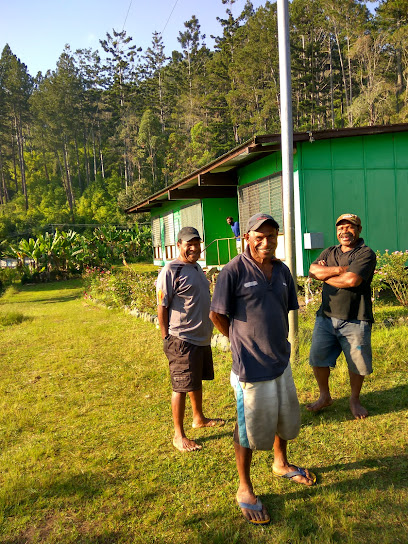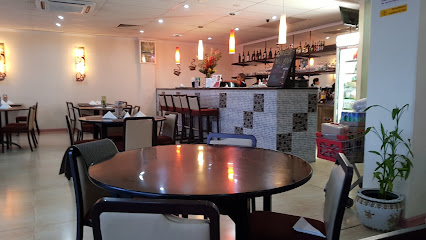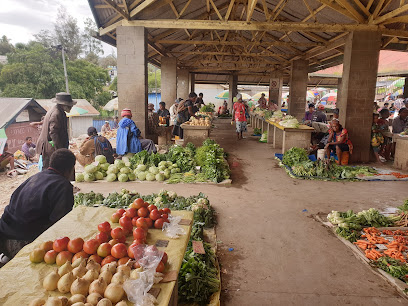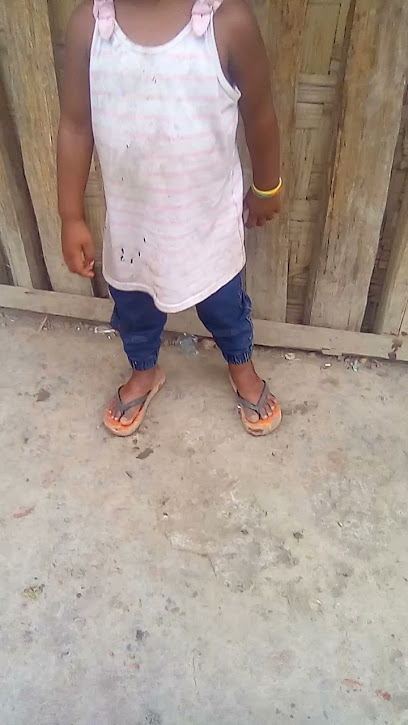
Mount Wilhelm: The Crown Jewel of Papua New Guinea
Explore Mount Wilhelm, Papua New Guinea's highest peak, where adventure meets culture amid stunning landscapes and traditional villages.
Mount Wilhelm is the highest peak in Papua New Guinea, standing tall at 4,509 meters above sea level. This majestic mountain offers breathtaking views and is a paradise for adventure seekers. The journey to the summit is a mix of lush rainforests, alpine grasslands, and rocky terrains, providing a diverse range of landscapes that will captivate any nature lover. The climb to the top of Mount Wilhelm is not just about reaching the summit; it is about the experience along the way. Trekkers will pass through traditional villages, where they can interact with the friendly locals and learn about their unique culture and way of life. The nights spent in rustic huts along the trail offer a chance to gaze at the star-studded sky, far away from the city lights. The final ascent to the peak is challenging but rewarding. As you stand on the summit, you will be greeted with panoramic views that stretch across the island and even, on a clear day, to the Bismarck Sea. Mount Wilhelm is not just a climb; it is a journey into the heart of Papua New Guinea’s natural beauty and cultural richness.
Local tips in Mount Wilhelm
- Acclimatize properly: Spend a day or two at the base to get used to the altitude before starting your trek.
- Hire a local guide: Local guides not only ensure safety but also enrich your journey with their knowledge and stories.
- Pack warm clothing: Temperatures can drop significantly at higher altitudes, especially during the night.
- Bring a good camera: The scenic views and cultural interactions offer numerous photo opportunities.
- Stay hydrated: Carry enough water and stay hydrated throughout the trek to avoid altitude sickness.
Mount Wilhelm: The Crown Jewel of Papua New Guinea
Mount Wilhelm is the highest peak in Papua New Guinea, standing tall at 4,509 meters above sea level. This majestic mountain offers breathtaking views and is a paradise for adventure seekers. The journey to the summit is a mix of lush rainforests, alpine grasslands, and rocky terrains, providing a diverse range of landscapes that will captivate any nature lover. The climb to the top of Mount Wilhelm is not just about reaching the summit; it is about the experience along the way. Trekkers will pass through traditional villages, where they can interact with the friendly locals and learn about their unique culture and way of life. The nights spent in rustic huts along the trail offer a chance to gaze at the star-studded sky, far away from the city lights. The final ascent to the peak is challenging but rewarding. As you stand on the summit, you will be greeted with panoramic views that stretch across the island and even, on a clear day, to the Bismarck Sea. Mount Wilhelm is not just a climb; it is a journey into the heart of Papua New Guinea’s natural beauty and cultural richness.
When is the best time to go to Mount Wilhelm?
Unmissable attractions to see
Mt Wilhelm
Discover the breathtaking heights of Mt. Wilhelm, the highest peak in Papua New Guinea, surrounded by stunning landscapes and rich cultural heritage.

Kalibobo Light House
Discover Kalibobo Lighthouse, a stunning landmark in Madang offering breathtaking coastal views and a glimpse into Papua New Guinea's maritime history.

Rotary Park
Discover the beauty of Rotary Park in Goroka - a peaceful retreat filled with lush greenery, cultural experiences, and family-friendly fun.

Queen's Park
Experience nature's beauty and tranquility at Queen's Park, a serene escape in Mount Hagen, Western Highlands Province, Papua New Guinea.

Balek Smell Water
Explore the untouched beauty of Balek Smell Water, a serene nature preserve in Madang Province offering breathtaking landscapes and diverse wildlife.

National Day Park
Discover the lush landscapes and serene beauty of National Day Park in Goroka, a peaceful retreat for nature lovers and explorers alike.

Lapegu Forestry Station
Explore the stunning landscapes and diverse wildlife at Lapegu Forestry Station in Papua New Guinea's Eastern Highlands.

Goroka Picnic Park
Experience the tranquility and natural beauty of Goroka Picnic Park, a serene escape in the Eastern Highlands of Papua New Guinea.

Peace Park
Discover the tranquility of Peace Park in Goroka, a serene escape in the heart of Eastern Highlands where nature and culture intertwine beautifully.

Geremiaka Trek & Tour
Discover the breathtaking landscapes and rich cultural heritage of Papua New Guinea at Geremiaka Trek & Tour in the Eastern Highlands.

Baiyer River Sanctuary
Explore the lush landscapes and vibrant biodiversity of Baiyer River Sanctuary in Papua New Guinea's Western Highlands.

Aundaka
Explore the breathtaking hiking trails of Aundaka in Papua New Guinea's Western Highlands for an unforgettable adventure in nature's embrace.

Kirkimb Mangakona
Experience the natural beauty and tranquility of Kirkimb Mangakona in Mount Hagen's lush gardens, a serene retreat in Papua New Guinea.

Konaitumbu/Popurul
Explore the natural beauty and rich culture of Konaitumbu/Popurul in the Southern Highlands, a hidden gem for adventurous travelers seeking authentic experiences.

Natauka Zamu Nature Park
Explore the lush landscapes and diverse wildlife of Natauka Zamu Nature Park in Goroka, a tranquil escape into nature's beauty.

Essential places to dine
Edge Cafe Port Moresby
Experience delightful brunches at Edge Cafe in Port Moresby, where local flavors meet international cuisine in a cozy atmosphere.

Savannah Bistro
Experience the rich flavors of Papua New Guinea at Savannah Bistro, where local ingredients meet international culinary excellence.

Asia Aromas Harbour Side West PNG
Experience authentic Chinese cuisine at Asia Aromas Harbour Side West in Lae, where every dish tells a story of flavor and tradition.

Fusion Bistro
Experience the fusion of local flavors and international cuisine at Fusion Bistro in Port Moresby - where every meal is a celebration.

Tandoor on the Harbour
Experience authentic Indian cuisine with stunning harbor views at Tandoor on the Harbour in Port Moresby.

Luluai
Discover authentic Papua New Guinean cuisine at Luluai - a culinary haven in Port Moresby that delights every palate.

THE DIRTY KITCHEN
Experience Port Moresby's culinary delight at The Dirty Kitchen, known for its exceptional burgers and inviting atmosphere.

Port Terrace Restaurant & Bar
Discover exquisite dining at Port Terrace Restaurant & Bar in Port Moresby—where local flavors meet international cuisine in an elegant setting.

Seoul House Restaurant
Discover authentic Korean flavors at Seoul House Restaurant in Port Moresby—an unforgettable culinary experience awaits!

Rondon Ridge
Experience breathtaking views and delightful cuisine at Rondon Ridge in Papua New Guinea's Western Highlands.

Mt Wilhelm
Experience breathtaking views and challenging hikes at Mt Wilhelm - Papua New Guinea's highest peak offering a paradise for outdoor enthusiasts.

Magi Seafood Restaurant
Experience fresh seafood delights at Magi Seafood Restaurant in Port Moresby - where local flavors meet exceptional service.

Bacchus Restaurant
Discover Bacchus Restaurant in Port Moresby - where exceptional local flavors meet elegant dining.

Rapala Restaurant
Discover culinary delights at Rapala Restaurant in Port Moresby, where local flavors meet global cuisine in an inviting atmosphere.

Goroka steak house
Discover culinary delight at Goroka Steak House—where succulent steaks meet stunning highland views.

Markets, malls and hidden boutiques
Vision City Mega Mall
Discover the best of shopping and dining at Vision City Mega Mall, where local culture meets global brands in Port Moresby.

Stop and Shop Waigani Central
Discover the vibrant shopping experience at Stop and Shop Waigani Central, where local culture meets international convenience in Port Moresby.

Tininga Hagen Central
Explore the vibrant flavors of Mount Hagen at Tininga Hagen Central, your gateway to local produce and traditional delicacies.

Jack's of PNG
Explore Jack's of PNG for a unique shopping experience, showcasing local and international fashion in the heart of Port Moresby.

Mt Wilhelm
Discover the breathtaking beauty and thrilling adventures at Mt Wilhelm, Papua New Guinea's highest peak nestled in the stunning Madang Province.

Kundiawa Main Market
Dive into the vibrant atmosphere of Kundiawa Main Market, where local culture, fresh produce, and unique crafts come together in a colorful experience.

Brian Bell Home Center
Explore Brian Bell Home Center in Goroka for a unique selection of home goods that capture the essence of Eastern Highlands culture.

Bintangor supermarket
Discover the essence of Goroka at Bintangor Supermarket, where local flavors and authentic experiences await every visitor.

Apex Supermarket
Discover local flavors and essentials at Apex Supermarket in Mount Hagen, your destination for shopping and cultural experience in Papua New Guinea.

Kerowagi Market
Discover the authentic charm of Kerowagi Market, where local culture meets vibrant shopping in Chimbu Province.

Duglogambagl Market, commonly known as Dugx.
Explore the vibrant Duglogambagl Market in Kundiawa, where local culture and unique home goods come together in a bustling atmosphere.

Hagen Coffee
Experience the rich flavors of Papua New Guinea at Hagen Coffee, a cozy spot in Mount Hagen that blends coffee culture with local artisan goods.

West Market, Puri
Experience the rich flavors of local coffee at West Market, a charming coffee shop in Puri, Jiwaka Province, perfect for every traveler.

Beming Red Mountain
Discover the breathtaking beauty and vibrant culture of Beming Red Mountain in Papua New Guinea, a must-visit destination for nature lovers.

Hugepa Trading
Discover the vibrant flavors and culture of Goroka at Hugepa Trading, your go-to grocery store for fresh produce and unique local products.

Essential bars & hidden hideouts
Jackson's Bar Restaurant & Gaming
Discover the lively ambiance and local flavors at Jackson's Bar Restaurant & Gaming, the ultimate entertainment hub in Port Moresby.

Mt Wilhelm
Discover the breathtaking beauty of Mt Wilhelm, the highest peak in Papua New Guinea, offering stunning views and an unforgettable hiking adventure.

Ramu Management Club
Experience the vibrant culture and relaxing ambiance at Ramu Management Club in beautiful Madang Province, Papua New Guinea.

Betty's Lodge
Discover the serene beauty and rich culture of Chimbu Province at Betty's Lodge, your perfect retreat in Papua New Guinea.

Paradise Grill
Discover the exquisite flavors of Paradise Grill in Ukarumpa, where local ingredients meet international culinary artistry.

Chetty's Restaurant
Discover the flavors of Papua New Guinea at Chetty's Restaurant in Mount Hagen, a must-visit culinary destination for every traveler.

Monsoon Lounge
Experience the vibrant taste of Port Moresby at Monsoon Lounge, a tropical bar offering delightful cocktails and light bites in a stylish setting.

SINGS
Experience the rich culinary heritage of Papua New Guinea at SINGS, a must-visit restaurant in Morobe Province with a vibrant menu and welcoming atmosphere.

Yuai Gateway
Discover vibrant nightlife and local culture at Yuai Gateway, the ultimate bar experience in Kundiawa, Chimbu Province.

MCP Club
Experience the vibrant culture and refreshing drinks at MCP Club, a must-visit bar in Gohikave, Eastern Highlands Province.

Vito Ato
Discover the lively atmosphere of Vito Ato, a social hub in Goroka where locals and tourists come together to enjoy drinks and culture.

Bala Koi Club
Discover the vibrant nightlife at Bala Koi Club in Minj, Jiwaka Province, where local culture meets energetic entertainment for an unforgettable experience.

Kaatai Winery Distributors
Experience the vibrant culture and local wines at Kaatai Winery Distributors in Banz, Jiwaka Province, a perfect blend of relaxation and community spirit.

AliBarBar
Discover the vibrant nightlife of Mount Hagen at AliBarBar, a local bar offering a unique blend of culture and community in the heart of the Highlands.

Hungry Kitchen
Discover the rich flavors of Papua New Guinea at Hungry Kitchen in Mount Hagen, where local ingredients meet international cuisine in a vibrant setting.

Local Phrases about Mount Wilhelm
-
- HelloKapul
[Kah-pool] - GoodbyeKapim gut
[Kah-peem goot] - YesEm
[Em] - NoNogat
[No-gat] - Please/You're welcomePlis
[Plees] - Thank youTenk yu
[Tank yoo] - Excuse me/SorrySori
[So-ree] - How are you?Yu stap gut?
[Yoo stap goot?] - Fine. And you?Gut tasol. Na yu?
[Goot tah-sol. Nah yoo?] - Do you speak English?Yu save long tok Inglis?
[Yoo sah-veh long toke In-glees?] - I don't understandMi nogat save
[Mee no-gat sah-veh]
- HelloKapul
-
- I'd like to see the menu, pleaseMi laik lukim menu, plis
[Mee like look-eem men-oo, plees] - I don't eat meatMi nogat kaikim kanda
[Mee no-gat kai-keem kan-dah] - Cheers!Mipela lukim
[Mee-pay-lah look-eem] - I would like to pay, pleaseMi laik bai, plis
[Mee like by, plees]
- I'd like to see the menu, pleaseMi laik lukim menu, plis
-
- Help!Halivim mi!
[Ha-lee-veem mee!] - Go away!Go long we!
[Go long way!] - Call the Police!Kolim Polis!
[Ko-leem Po-lees!] - Call a doctor!Kolim dokta!
[Ko-leem dok-tah!] - I'm lostMi les
[Mee less] - I'm illMi sik
[Mee seek]
- Help!Halivim mi!
-
- I'd like to buy...Mi laik baim...
[Mee like bime...] - I'm just lookingMi tasol lukim
[Mee tah-sol look-eem] - How much is it?Em inap long hamamas?
[Em ee-nap long ha-ma-mas?] - That's too expensiveEm i planti tumas
[Em ee plan-tee too-mas] - Can you lower the price?Yu ken lusim pris?
[Yoo ken loo-seem prees?]
- I'd like to buy...Mi laik baim...
-
- What time is it?Em i wanem taim?
[Em ee wah-nem tah-eem?] - It's one o'clockEm i wan taim
[Em ee wah-nah tah-eem] - Half past (10)Haus past tupela
[Haus past too-pay-lah] - MorningMoning
[Moh-ning] - AfternoonApinun
[Ah-pee-noon] - EveningEvening
[Eh-veh-ning] - YesterdayIsterde
[Is-ter-day] - TodayTude
[Too-day] - TomorrowTumora
[Too-mor-ah] - 1Wan
[Wahn] - 2Tu
[Too] - 3Tri
[Tree] - 4Fo
[Foh] - 5Faiv
[Fah-eve] - 6Sikis
[Sick-iss] - 7Seven
[Sev-en] - 8Eit
[Ate] - 9Nain
[Nah-een] - 10Ten
[Ten]
- What time is it?Em i wanem taim?
-
- Where's a/the...?Wanem ples...
[Wah-nem plehs...] - What's the address?Em i wanem adras?
[Em ee wah-nem ad-ras?] - Can you show me (on the map)?Yu ken soim mi?
[Yoo ken soy-mee mee?] - When's the next (bus)?Wanem taim nabin (bus)?
[Wah-nem tah-eem nah-been (bus)?] - A ticket (to ....)Wan tiket (long ....)
[Wah-n tee-ket (long ....)]
- Where's a/the...?Wanem ples...
History of Mount Wilhelm
-
Mount Wilhelm, the highest peak in Papua New Guinea at 4,509 meters (14,793 feet), was named after Kaiser Wilhelm II of Germany. The mountain is part of the Bismarck Range and was first climbed in 1938 by the German explorer, Leutnant Leopold von Hagen, during an expedition aiming to map the region.
-
During World War II, the area around Mount Wilhelm played a crucial role due to its strategic location. Japanese and Allied forces fought for control over the highlands, and the mountain served as a vantage point for military operations. The remnants of war, such as old aircraft wrecks and military equipment, can still be found in the surrounding areas.
-
Mount Wilhelm holds significant cultural importance for the indigenous Chimbu and Western Highlands tribes. The mountain is considered sacred, and local legends speak of spirits residing in its peaks. Traditional practices and ceremonies, such as offerings and dances, are performed to honor these spirits and seek their protection.
-
In the 1970s, the Papua New Guinea government recognized the ecological and cultural importance of Mount Wilhelm and its surrounding areas. The establishment of the Mount Wilhelm National Park aimed to protect the region's unique flora and fauna, as well as to preserve the cultural practices of the indigenous communities. The park has since become a significant conservation area and a popular destination for eco-tourism.
-
Today, Mount Wilhelm is a popular trekking destination for adventurers from around the world. The challenging climb to the summit offers breathtaking views and a chance to experience the diverse ecosystems of Papua New Guinea. The mountain continues to be a symbol of natural beauty and cultural heritage, drawing visitors who seek to explore its rich history and vibrant traditions.
Mount Wilhelm Essentials
-
Mount Wilhelm is located in the Bismarck Range of Papua New Guinea. The nearest international airport is Jacksons International Airport in Port Moresby. From Port Moresby, you can take a domestic flight to Goroka or Kundiawa, the closest towns to the base of Mount Wilhelm. From these towns, you can arrange for local transport or guided tours to Keglsugl, the village at the base of the mountain.
-
Within the vicinity of Mount Wilhelm, transportation options are limited. Local buses and minibuses, known as PMVs (Public Motor Vehicles), are available but may not be very reliable. Hiring a local guide with a vehicle is highly recommended for convenience and safety. Walking and trekking are common modes of getting around the immediate area, especially for reaching the higher altitudes of the mountain.
-
The official currency in Papua New Guinea is the Papua New Guinean Kina (PGK). Credit cards are accepted in some hotels and larger establishments in Goroka and Kundiawa, but it is advisable to carry cash, especially when traveling to remote areas like Mount Wilhelm. ATMs can be found in Goroka and Kundiawa, but it's best to withdraw sufficient cash before heading to the mountain.
-
While the area around Mount Wilhelm is generally safe, it is important to take standard precautions. Avoid traveling alone, especially after dark, and keep valuables secure. Be cautious in towns like Goroka and Kundiawa, as petty crime can occur. Always use reputable guides and local services to ensure a safe and enjoyable experience.
-
In case of emergency, dial 000 for immediate assistance. Medical facilities are limited in remote areas, so it is essential to have travel insurance that covers emergency evacuation. The nearest hospitals are located in Goroka and Kundiawa. For minor health issues, there are pharmacies in these towns, but it's advisable to carry a basic first aid kit.
-
Fashion: Do dress in layers, as temperatures can vary widely between the base and the summit. Avoid flashy or revealing clothing. Religion: Do respect local customs and traditions. Always ask for permission before entering villages or taking photos of locals. Public Transport: Do be patient and respectful when using PMVs. They can be crowded and may not run on a strict schedule. Greetings: Do greet people with a smile and a handshake. Learning a few phrases in Tok Pisin (the local language) can go a long way. Eating & Drinking: Do try local foods such as kaukau (sweet potato) and mumu (traditional earth oven cooking). Don't refuse food or drink offered by locals, as it is considered impolite.
-
To experience Mount Wilhelm like a local, consider staying in guesthouses in Keglsugl village and engage with the local community. Participate in traditional activities and ceremonies if invited. The best time to climb Mount Wilhelm is during the dry season from May to October. Hiring a local guide is not only beneficial for navigation but also for gaining insights into the local culture and environment.
Nearby Cities to Mount Wilhelm
-
Things To Do in Mount Hagen
-
Things To Do in Madang
-
Things To Do in Buka
-
Things To Do in Lae
-
Things To Do in Wewak
-
Things To Do in Port Moresby
-
Things To Do in Vanimo
-
Things To Do in Kimbe
-
Things To Do in Kavieng
-
Things To Do in Alotau
-
Things To Do in Rabaul
-
Things To Do in Kokopo
-
Things To Do in Arawa
-
Things To Do in Port Douglas
-
Things To Do in Cairns








